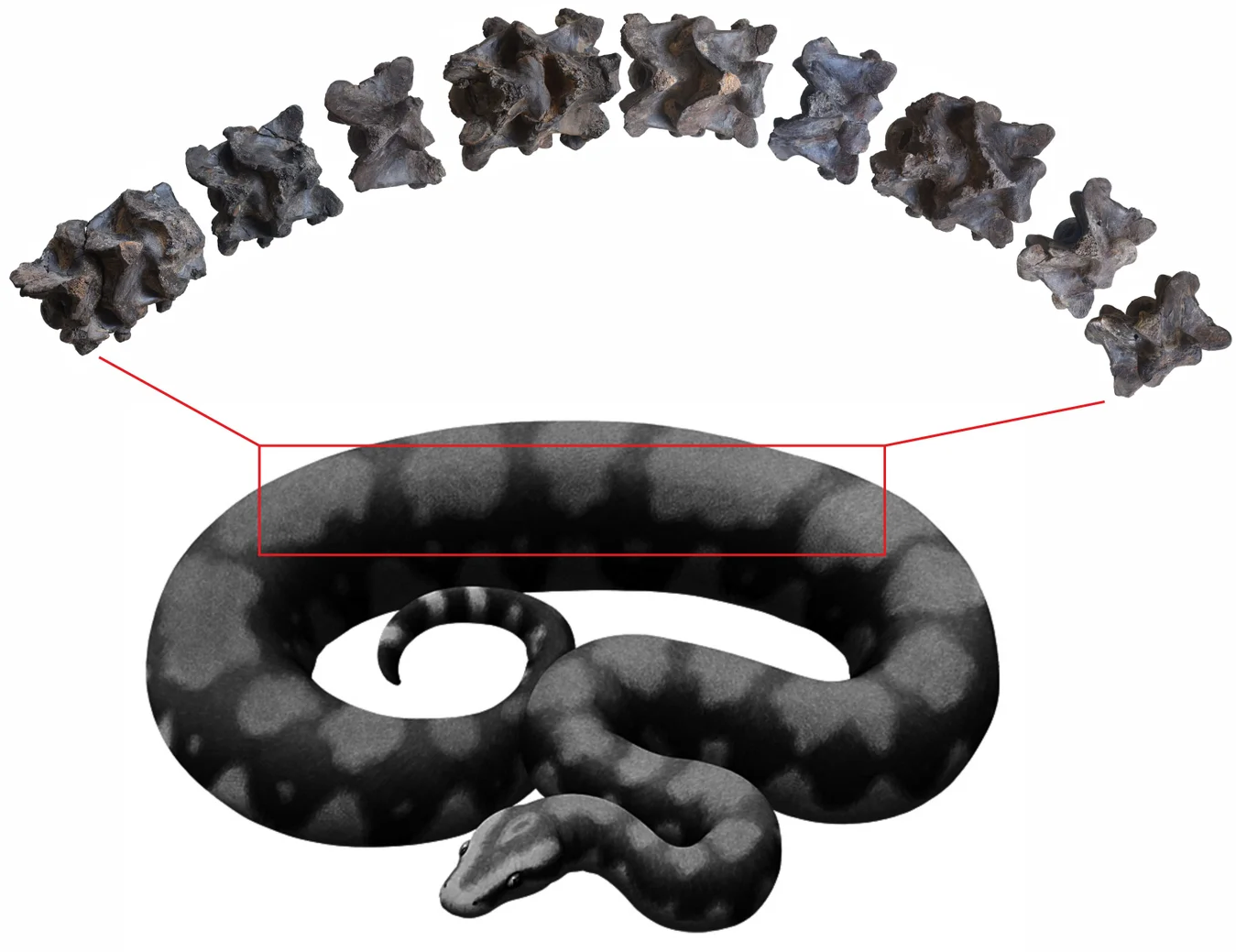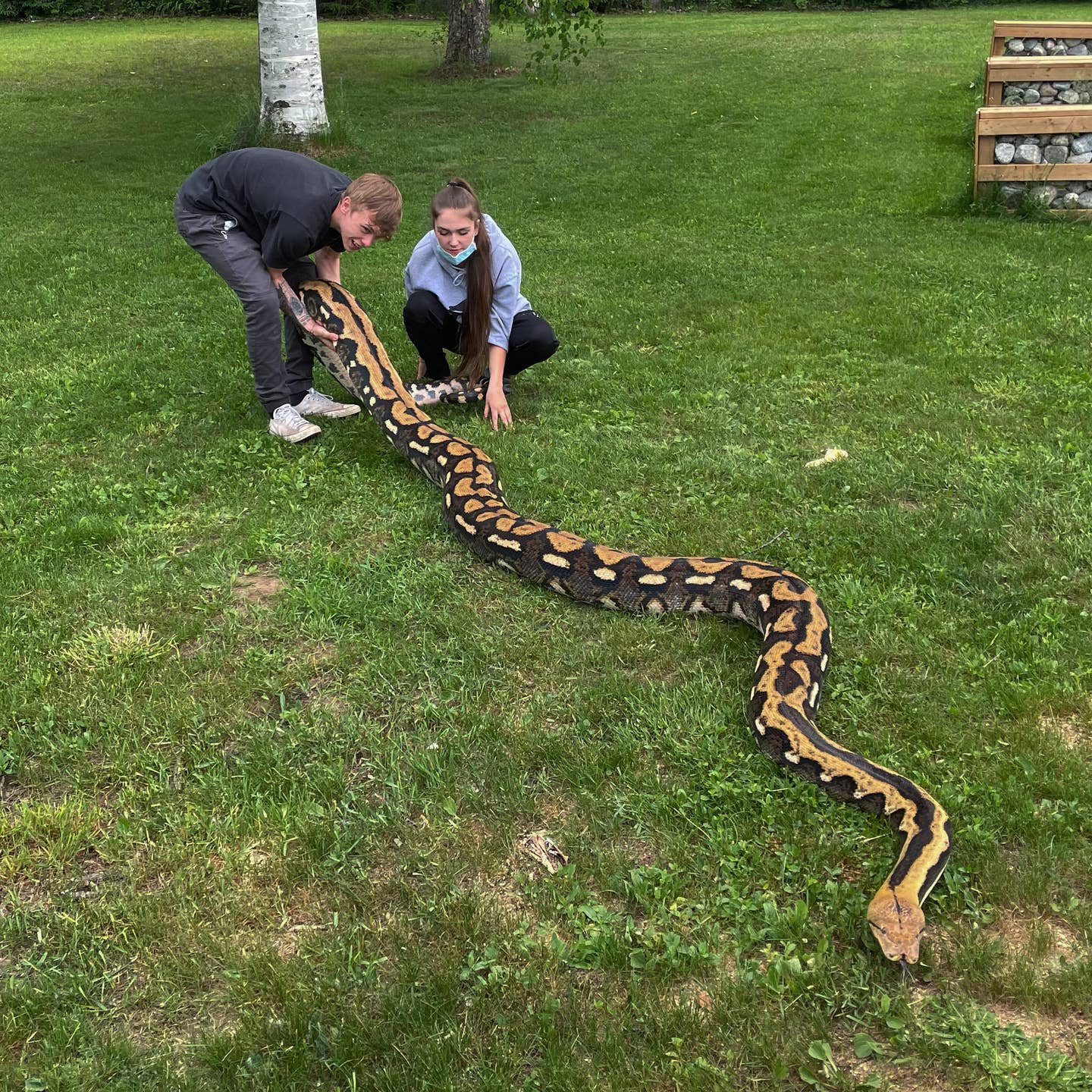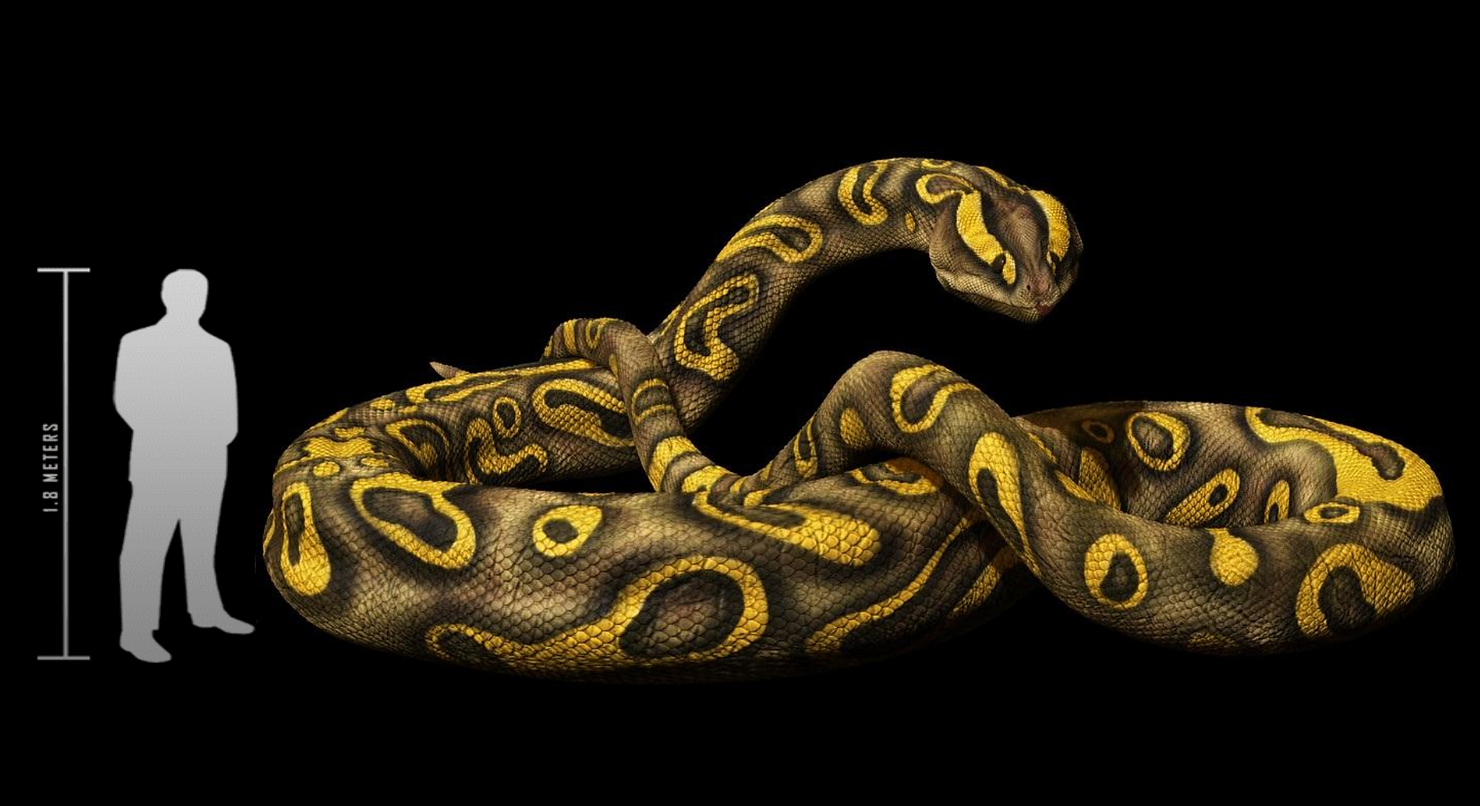In a groundbreaking discovery, scientists in India have found the fossilized remains of a huge snake believed to be one of the largest of its kind ever found. This colossal creature, called Vasuki indicus, stretches an astonishing 50 feet in length and dwarfs its modern relatives such as pythons.
Researchers from the Indian Institute of Technology Roorkee stumbled upon a remarkably well-preserved segment of the snake’s spine. Dr. Rajesh Kumar, lead author of the study, expressed excitement at the find, describing it as “excellently preserved.”

Their analysis, based on 27 vertebrae, definitively identified the specimen as Vasuki indicus, a long-extinct species.
The name “Vasuki” draws inspiration from Hindu mythology, specifically the serpent Vāsuki, coiled around the neck of Lord Shiva, a central figure in Shaivism. This choice reflects the cultural significance of snakes in Indian folklore.
Insights gleaned from the fossil suggest that Vasuki indicus was not only a colossal snake, but also a formidable predator. Scientists speculate that its enormous size made it sluggish, ruling out the possibility that it was actively hunting prey.
Instead, they argue that Vasuki likely used ambush tactics similar to modern pythons, relying on constriction to subdue his victims.
In describing the specimen’s physical characteristics, the study highlights its fully developed stature and robust build. With a broad, cylindrical body, Vasuki indicus could have tipped the scales at a staggering 2,200 pounds, making it a true giant of the ancient world.
Comparisons with other extinct snakes further emphasize the extraordinary dimensions of Vasuki indicus. While the famous Titanoboa shares a similar length, stretching between 45 and 50 feet, Vasuki’s girth sets it apart. This places it firmly in contention for the title of largest snake ever discovered.

Delving into the evolutionary history of these colossal snakes, researchers note their lineage within the Madtsoiidae family. Spanning around 100 million years across Africa, Europe and India, these ancient reptiles left an indelible mark on Earth’s ecosystems.
However, Vasuki indicus occupies a unique niche within this lineage, originating specifically from the Indian subcontinent in a bygone era, approximately 56 to 34 million years ago.
The discovery of Vasuki indicus serves as a testimony to India’s rich paleontological heritage. Dr. Kumar emphasizes the importance of such finds in unraveling the mysteries of prehistoric life, saying, “Every fossil unearthed provides a glimpse into the distant past, enriching our understanding of Earth’s ancient inhabitants.”

The excavation of Vasuki indicus represents a significant milestone in the annals of paleontology. As scientists continue to delve into the depths of Earth’s history, discoveries like this illuminate the fascinating diversity of life that once thrived on our planet.
The longest snakes in the world today
Reticulated Python (Malayopython reticulatus)
The reticulated python is the longest snake in the world, reaching lengths of up to 30 feet (9 meters). It is native to Southeast Asia and thrives in rainforests, grasslands and forests. Its striking pattern of dark and light bands gives it the name “network”. This non-venomous constrictor preys on mammals and birds, and although there are rare reports of attacks on humans, these pythons typically avoid contact.

Green Anaconda (Eunectes murinus)
While the green anaconda holds the title of the heaviest snake, it can still grow up to 29 feet (8.8 meters) long. Found in South America, especially in the Amazon and Orinoco basins, this massive snake is semiaquatic and spends much of its time in swamps and rivers. Its bulky frame allows it to overpower large prey such as capybaras, deer and even caimans through constriction.

burmese python (Python bivittatus)
This large python can grow up to 23 feet (7 meters) long and is native to Southeast Asia. It inhabits bogs, grasslands and open forests. Known to be an invasive species in the Florida Everglades, the Burmese python has a voracious appetite and feeds on birds, mammals and even alligators. Its popularity in the pet trade has contributed to its spread beyond its original range.
African Rock Python (Python sebae)
Africa’s largest snake, the African rock python, can reach lengths of up to 20 feet (6 meters). It is found across sub-Saharan Africa and can live in a variety of habitats, including savannas, forests and grasslands. Known for its aggressive nature when threatened, this constrictor hunts large animals such as antelopes and warthogs.
Indian python (Python molurus)
Closely related to the Burmese python, the Indian python can grow up to 20 feet (6 meters) long. It inhabits the forests, grasslands and swamps of the Indian subcontinent. This species is revered in Indian culture, often depicted in folklore. It is a powerful constrictor that hunts small mammals, birds and reptiles.
Amethystine Python (Morelia amethystina)
Also known as the scrub python, the amethystine python can grow up to 19 feet (5.8 meters) and is native to Australia, Papua New Guinea and parts of Indonesia. It is named for its iridescent scales that shine with a purple hue in the light. This python is an excellent climber and hunter, hunting birds, bats and small mammals.
King Cobra (Ophiophagus hannah)
The king cobra is the longest venomous snake in the world, capable of reaching lengths of up to 18 feet (5.5 meters). Native to Southeast Asia and parts of India, this snake is known for its potent neurotoxic venom and distinctive hood. Despite its intimidating size, it feeds primarily on other snakes, including venomous species.
Boa Constrictor (Boa constrictor)
The boa constrictor can grow up to 13 feet (4 meters) long and is native to tropical areas of Central and South America. Although not as long as some pythons, it is an iconic constrictor species that uses its muscular body to subdue prey. Boas are solitary hunters and have been known to live in a variety of habitats, from rainforests to dry areas.
Yellow Anaconda (Eunectes notaeus)
Although smaller than its relative, the green anaconda, the yellow anaconda can still grow to 13 feet (4 meters) long. It is found in the swamps and marshes of South America, especially in Paraguay and Argentina. Like other anacondas, it is semiaquatic and hunts aquatic animals such as fish and birds.
Olive Python (Liasis olivaceus)
The olive python, native to Australia, can reach lengths of up to 13 feet (4 meters). It gets its name from its smooth, olive-colored scales. This python prefers rocky outcrops and ravines where it can find prey such as wallabies, bats and small mammals. It is non-venomous and pulls its prey together to kill it.
These snakes represent the most impressive lengths in the reptile world and display a diversity of habitats, behaviors and adaptations for survival.
